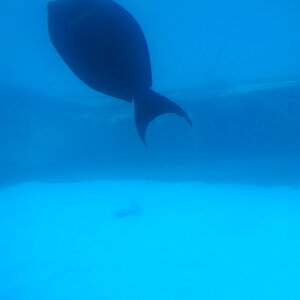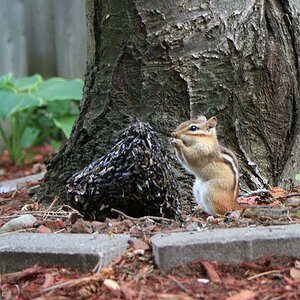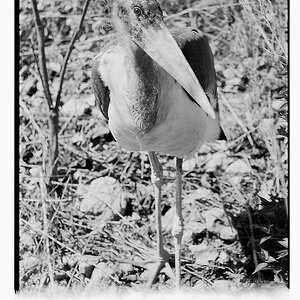iolair
No longer a newbie, moving up!
I shot my first wedding on Saturday. I'm pleased with the results - I'll probably share some in a few weeks, but I'm still editing - and contractually the bride and groom get first look at the images once done.
Anyway, I thought I'd share some of my thoughts on what was good and bad photographically about the day.
I turned up with Canon 50D, 40D and 20D bodies, lenses 17-55mm f/2.8 EF-S (hired), 70-200mm f/2.8 IS II (hired), 28mm f/2.8, 50mm f/1.8, 60mm f/2.8 Macro and 10-22mm f/3.4-5.5. 5 batteries (the bodies all take the same), 16GB x 2, 8GB, 4GB, 2GB and 1GB memory cards. Yongnuo 460 II flashes x 3, light stands x 3, umbrella softboxes + brackets x 2. Short stepladder (3 steps), tripod, sundry bags, cleaning cloths etc.
I'm very comfortable with the Canons and very quickly change ISO, aperture and focus point as conditions change. I don't bother setting White Balance at all, leaving it to worry about when I edit the raw files.
The wedding was held in a field belonging to the bride's family home, with a teepee set up for the wedding ceremony and a marquee for the evening reception. I was due to be there for the the service (12:30-13:00) and before, and for the formal group and couple shots afterwards - about three hours of shooting time. As they were on a tight budget, they'd asked a friend to photograph their evening reception. The couple were very laid back, easy to get on with, and happy about the fact it was my first wedding just telling me to get what I could. My girlfriend (who's not a photographer) came with me to assist.
I dropped by the evening before once the marquee and teepee were assembled to check the lay of the land and light levels. I'd assumed I'd be able to sneak round the side of the teepee during the ceremony, but there was no space so I opened a flap up behind where the ceremony would be to sneak in the back. They also made the rings available to me so I was able to get shots of those to save time the next day. The ring shots were made on the 60mm macro. I shot them in a few locations - on the hay bales they were using as seats, hanging from fairy lights, and with the wine glasses in the reception marquee. With the macro, depth of field is very shallow (even at higher aperture numbers), and because aperture has to be so small, shutter speed makes camera shake a real risk. Because of the tight working space with the 60mm macro, it wasn't practical to put the camera on a tripod, and unfortunately I didn't have my flashes with me on Friday evening. However, I still got a several decent shots.
LESSONS / ROOM FOR IMPROVEMENT
Any of these would have done the job:
- Push the ISO further for clean shots. The 50D produces usable shots up to ISO 3200 in good conditions.
- Always carry flash and triggers when I carry the camera
- A macro lens with a better working distance (100mm as opposed to 60mm) would have given space to use the tripod, or a gorillapod would have adjusted to fit the space available.
- A macro lens with IS (are there any good options for Canon?).
The day was very warm with no cloud and strong, harsh sunlight. The wedding was kind of 'music festival' themed ('wedstock'!).
Before the guests started to arrive, I took some wide shots of the venue with the 10-22mm, then I set up a couple of light stands ready for the group shots, loaded myself up with my double harness - carrying both the 50D with the 17-55mm f/2.8 and the 40D with the 70-200mm f/2.8 IS II. I gave my girlfriend the 20D with the 28mm f/2.8, set it on Aperture priority, f/8, ISO 100 and asked her to get some shots of the guests arriving while I shot the bride preparing (just metres away in her mum's house), then later asked her to get some shots of the guests enjoying themselves when I went off to do couple portraits with the bride and groom.
Before the ceremony, I took the groom and best man into the marquee to shoot them, and the lighting was perfectly diffused by all the canvas - great portraits. Shooting the bride and bridesmaids preparing in natural light in the house was fine too.
The ceremony was absolutely fine - I oscillated between the back and front of the teepee. I pushed the Canons to ISO 1250. The image stabilisation on the hired lenses was a godsend - shooting down to 1/100s comfortably on the 70-200 and 1/30s or slower on the 17-55. Unfortunately I still lost a few shots to motion blur (not camera shake) at these speeds, but have plenty of good ones. I also failed to get a well-composed shot of a very young bridesmaid bringing them the rings - I didn't realise when it was going to happen and was in a poor position. However, I was well placed for and got great shots of the vows reading, ring exchange and first kiss. I failed to get the 'first look' picture - actually the bride rushed up to the front of the little teepee in seconds, I think she was very keen to get to her groom!
LESSONS / ROOM FOR IMPROVEMENT
- Consider using faster primes or higher ISOs for the service to freeze movement.
- Find out in more detail the who/what/where/when of the service, in order to be in the right place at the right time
- Get a little bit more involved with setting up moments to ensure getting a good 'first look' photo and 'bride coming down the aisle' photo (although these weren't on the shot list I'd worked out with the couple, they still would have been nice).
Almost straight after the ceremony, I went for a shot the bride and groom had asked for - a crowd image with EVERY guest, around 100 people in total. With so many people, no high vantage point, direct sunlight and only small flashes this was always going to be a compromise. I didn't bother getting my flashes out (three small flashes and a hundred people in light that strong? No point.). I'd originally discussed with the couple that I might go into the upstairs of the house to take the crowd shot, but the suitable windows were so far from where there was space for the group that the angle down on them was no better than using my little step ladder. So, I loosely arranged the crowd (it wasn't THAT important a shot to spend a long time arranging 100 people exactly) with the couple ahead of them, just took about ten shots from the step ladder - a few straight, then with them waving, then (for some reason) decided to ask them to try to jump in the air together. That last one didn't really work with a hundred people. The waving made a nice shot though. I shot into the sun to minimise harsh shadows and exposed for the people.
LESSONS / ROOM FOR IMPROVEMENT
- Don't expect a hundred people of all ages to jump in the air altogether. Seriously, what was I thinking?
- Beyond that, I don't know. A full-height step ladder would have helped, but I don't have the ability to carry one on my car. I do have a little Pentax Q10 with a fisheye lens that I sometimes put on a pole to get high-vantage-point wide shots. If I'd thought of that, it would have been a good idea to get a couple of alternative shots with that as well as the SLR.
After giving the bride and groom some time to relax and chill with their guests, we went on to the formal group shots. I shot into the sun, setting up light stands with a bare flash 3 metres out from the guests, one to each side of the group. The ambient light for the background was 1/200s at f/11, so I set the camera at 1/250s at f/11 to give the flash a tiny advantage over the ambient. (my Yongnuos have a guide number of 34 ISO 100 metres in tests, so at three metres give f/11). With the bare flashes the light was a little harsh, but if I'd put on the umbrellas I'd have lost about two stops of light and they wouldn't have provided suitable fill, and it was rather too windy for the stands to stay up safely with softboxes. I shot from the step ladder again, and because of the uneven ground had my girlfriend stabilise the ladder - otherwise I doubt I'd have been able to use it. For most of the group shots, I did three sets - looking at me, raising their glasses to toast the couple, and looking in toward the couple. I shot three frames for each set, unless I saw something that made me shoot more. I'm mostly very pleased with the results of the group shots. With the first two shots - both friend groups - it took what felt like a VERY long time to gather all the people (even with the best man helping, who had been asked in advance to work with me to find people). With the groom's family, they didn't seem to relax at all in front of the camera, didn't seem to want to stand very close to each other - and having checked those images, EVERY time I shot the couple with the groom's family, the groom has his eyes closed. A little editing task for me there. The final group images were with the wedding party (bride, groom, two bridesmaids, best man) and I got a couple of great shots of them all jumping in the air together (works way better with five than with a hundred!).
LESSONS / ROOM FOR IMPROVEMENT
- on the shot list, ask not only for the group but the names of everyone in each group - which will make finding them or asking for them by me or the best man much quicker.
- I doubt I could have done better with the lighting in the harsh sunlight with the equipment I had, but a couple of studio strobes and battery packs would have effortlessly overpowered the sun and therefore let me use light modifiers. Of course, with the wind, I'd also have needed a set of sandbags to weigh down the lights. Would all that have been worth it, or was what I did good enough?
- I shot the group with the marquee behind them. In retrospect, if I'd shot them the other side, with them facing the marquee, it would have been a giant reflector putting nice even light onto them. Of course, they might have all been squinting at the reflected light - but I should have at least done a light check there to see if it would have worked.
- I did lose a handful of shots because my flashes had not yet recharged. Again, better flashes or more patience would have got round this (I may also experiment with a few different batteries to see which give the fastest recharge times).
After the group shots, the bride, groom and I went to a few nice locations in their neighbour's garden to do the couple portraits. I took a single flash and stand, bare again (I probably could have and should have used the softbox here, as we were in the shade, although the gusts of wind might have made it difficult I did have one sandbag in the car to weigh the stand down), and shot a mix of using the flash as key light (and ambient as the fill), and just using the available light. I did an absolute minimal amount of posing with them, instead just backing off with the longer lens and letting them relax and chat. That seemed to be a good thing to do as I got some really sweet shots of them naturally interacting, and I balanced the key light well enough with the ambient that the flash didn't cause harsh shadows.
LESSONS / ROOM FOR IMPROVEMENT
- fit the softbox (and necessary sandbag) to the lightstand/flash for more flattering light.
Incidentally, I shoot in aperture-priority when using just available light, or manual mode when using flash.
Afterwards, I got a few more candid shots of the guests interacting - then my time was up and I headed home to back up the photos. In fact, the 16GB memory card I had been using in the 50D, I had bought THAT MORNING. I was concerned that I might run out of memory (I wouldn't have done) that I ran over to PC World and bought a new CF card, formatted it in the camera, and used that. I got home and immediately went to back up my photos. I copied the images from the cards in the 20D and 40D absolutely fine, but when I put the CF card from the 50D into the reader and started to copy the files, after about 20 images it stopped, complaining of data corruption. Then I tried opening the files that it had copied, and most of them refused to open. It appeared that I had lost all of the group shots and most of the couple portraits. No, I was not a happy bunny. JFileRecovery has worked well for me in the past but failed to rescue any of the corrupted images for me. Then, I put the card back in the 50D, which read it and let me look at the images fine. So I connected the camera directly to my PC using a USB cable, and the images copied with absolutely no problem. Very, very relieved after half an hour of thinking I'd lost most of the couple's wedding photos.
LESSONS / ROOM FOR IMPROVEMENT
- For a next wedding (if I do another one), consider renting a 5D mk III so I can benefit from its dual card slots and immediately have two copies.
- Shoot on smaller capacity cards (2GB?), so if one card fails then fewer of images are lost.
FINAL NOTES
- Editing the images, I'm so glad I shoot in RAW - so many of the candid photos were taken with really harsh cross-shadows from the strong sunlight, which the level of detail in RAW lets me minimise the shadows a lot while maintaining a good image.
- Renting the EF-S 17-55 f/2.8 was a good decision, such a strong lens - practically instant autofocus, very good image stabilisation, great colours, good contrast, very sharp. A lens you can rely on.
- The 70-200mm f/2.8 IS II is HUGE, and quite bulky and difficult to manage while carrying two cameras (If I'd been carrying just one camera, I think the bulk would have been quite manageable). While it got me a few shots in the service probably no other lens would have done (due to the large aperture, reach and IS), most of the time I would have been happier with a smaller alternative. I think in similar circumstances in the future I'd rather have the 70-200mm f/4 IS while outdoors (half the weight) and something like the 85mm f/1.8 or 100mm f/2 inside (much lighter to handle and potentially better at freezing action). Also, in one or two cases the extremely shallow depth of field at the long end caught me out - while I could have shot at f/4, the temptation is to stay at f/2.8 for portraits when you have it.
I hope that's been useful for someone, and any thoughts are welcome
Anyway, I thought I'd share some of my thoughts on what was good and bad photographically about the day.
I turned up with Canon 50D, 40D and 20D bodies, lenses 17-55mm f/2.8 EF-S (hired), 70-200mm f/2.8 IS II (hired), 28mm f/2.8, 50mm f/1.8, 60mm f/2.8 Macro and 10-22mm f/3.4-5.5. 5 batteries (the bodies all take the same), 16GB x 2, 8GB, 4GB, 2GB and 1GB memory cards. Yongnuo 460 II flashes x 3, light stands x 3, umbrella softboxes + brackets x 2. Short stepladder (3 steps), tripod, sundry bags, cleaning cloths etc.
I'm very comfortable with the Canons and very quickly change ISO, aperture and focus point as conditions change. I don't bother setting White Balance at all, leaving it to worry about when I edit the raw files.
The wedding was held in a field belonging to the bride's family home, with a teepee set up for the wedding ceremony and a marquee for the evening reception. I was due to be there for the the service (12:30-13:00) and before, and for the formal group and couple shots afterwards - about three hours of shooting time. As they were on a tight budget, they'd asked a friend to photograph their evening reception. The couple were very laid back, easy to get on with, and happy about the fact it was my first wedding just telling me to get what I could. My girlfriend (who's not a photographer) came with me to assist.
I dropped by the evening before once the marquee and teepee were assembled to check the lay of the land and light levels. I'd assumed I'd be able to sneak round the side of the teepee during the ceremony, but there was no space so I opened a flap up behind where the ceremony would be to sneak in the back. They also made the rings available to me so I was able to get shots of those to save time the next day. The ring shots were made on the 60mm macro. I shot them in a few locations - on the hay bales they were using as seats, hanging from fairy lights, and with the wine glasses in the reception marquee. With the macro, depth of field is very shallow (even at higher aperture numbers), and because aperture has to be so small, shutter speed makes camera shake a real risk. Because of the tight working space with the 60mm macro, it wasn't practical to put the camera on a tripod, and unfortunately I didn't have my flashes with me on Friday evening. However, I still got a several decent shots.
LESSONS / ROOM FOR IMPROVEMENT
Any of these would have done the job:
- Push the ISO further for clean shots. The 50D produces usable shots up to ISO 3200 in good conditions.
- Always carry flash and triggers when I carry the camera
- A macro lens with a better working distance (100mm as opposed to 60mm) would have given space to use the tripod, or a gorillapod would have adjusted to fit the space available.
- A macro lens with IS (are there any good options for Canon?).
The day was very warm with no cloud and strong, harsh sunlight. The wedding was kind of 'music festival' themed ('wedstock'!).
Before the guests started to arrive, I took some wide shots of the venue with the 10-22mm, then I set up a couple of light stands ready for the group shots, loaded myself up with my double harness - carrying both the 50D with the 17-55mm f/2.8 and the 40D with the 70-200mm f/2.8 IS II. I gave my girlfriend the 20D with the 28mm f/2.8, set it on Aperture priority, f/8, ISO 100 and asked her to get some shots of the guests arriving while I shot the bride preparing (just metres away in her mum's house), then later asked her to get some shots of the guests enjoying themselves when I went off to do couple portraits with the bride and groom.
Before the ceremony, I took the groom and best man into the marquee to shoot them, and the lighting was perfectly diffused by all the canvas - great portraits. Shooting the bride and bridesmaids preparing in natural light in the house was fine too.
The ceremony was absolutely fine - I oscillated between the back and front of the teepee. I pushed the Canons to ISO 1250. The image stabilisation on the hired lenses was a godsend - shooting down to 1/100s comfortably on the 70-200 and 1/30s or slower on the 17-55. Unfortunately I still lost a few shots to motion blur (not camera shake) at these speeds, but have plenty of good ones. I also failed to get a well-composed shot of a very young bridesmaid bringing them the rings - I didn't realise when it was going to happen and was in a poor position. However, I was well placed for and got great shots of the vows reading, ring exchange and first kiss. I failed to get the 'first look' picture - actually the bride rushed up to the front of the little teepee in seconds, I think she was very keen to get to her groom!
LESSONS / ROOM FOR IMPROVEMENT
- Consider using faster primes or higher ISOs for the service to freeze movement.
- Find out in more detail the who/what/where/when of the service, in order to be in the right place at the right time
- Get a little bit more involved with setting up moments to ensure getting a good 'first look' photo and 'bride coming down the aisle' photo (although these weren't on the shot list I'd worked out with the couple, they still would have been nice).
Almost straight after the ceremony, I went for a shot the bride and groom had asked for - a crowd image with EVERY guest, around 100 people in total. With so many people, no high vantage point, direct sunlight and only small flashes this was always going to be a compromise. I didn't bother getting my flashes out (three small flashes and a hundred people in light that strong? No point.). I'd originally discussed with the couple that I might go into the upstairs of the house to take the crowd shot, but the suitable windows were so far from where there was space for the group that the angle down on them was no better than using my little step ladder. So, I loosely arranged the crowd (it wasn't THAT important a shot to spend a long time arranging 100 people exactly) with the couple ahead of them, just took about ten shots from the step ladder - a few straight, then with them waving, then (for some reason) decided to ask them to try to jump in the air together. That last one didn't really work with a hundred people. The waving made a nice shot though. I shot into the sun to minimise harsh shadows and exposed for the people.
LESSONS / ROOM FOR IMPROVEMENT
- Don't expect a hundred people of all ages to jump in the air altogether. Seriously, what was I thinking?
- Beyond that, I don't know. A full-height step ladder would have helped, but I don't have the ability to carry one on my car. I do have a little Pentax Q10 with a fisheye lens that I sometimes put on a pole to get high-vantage-point wide shots. If I'd thought of that, it would have been a good idea to get a couple of alternative shots with that as well as the SLR.
After giving the bride and groom some time to relax and chill with their guests, we went on to the formal group shots. I shot into the sun, setting up light stands with a bare flash 3 metres out from the guests, one to each side of the group. The ambient light for the background was 1/200s at f/11, so I set the camera at 1/250s at f/11 to give the flash a tiny advantage over the ambient. (my Yongnuos have a guide number of 34 ISO 100 metres in tests, so at three metres give f/11). With the bare flashes the light was a little harsh, but if I'd put on the umbrellas I'd have lost about two stops of light and they wouldn't have provided suitable fill, and it was rather too windy for the stands to stay up safely with softboxes. I shot from the step ladder again, and because of the uneven ground had my girlfriend stabilise the ladder - otherwise I doubt I'd have been able to use it. For most of the group shots, I did three sets - looking at me, raising their glasses to toast the couple, and looking in toward the couple. I shot three frames for each set, unless I saw something that made me shoot more. I'm mostly very pleased with the results of the group shots. With the first two shots - both friend groups - it took what felt like a VERY long time to gather all the people (even with the best man helping, who had been asked in advance to work with me to find people). With the groom's family, they didn't seem to relax at all in front of the camera, didn't seem to want to stand very close to each other - and having checked those images, EVERY time I shot the couple with the groom's family, the groom has his eyes closed. A little editing task for me there. The final group images were with the wedding party (bride, groom, two bridesmaids, best man) and I got a couple of great shots of them all jumping in the air together (works way better with five than with a hundred!).
LESSONS / ROOM FOR IMPROVEMENT
- on the shot list, ask not only for the group but the names of everyone in each group - which will make finding them or asking for them by me or the best man much quicker.
- I doubt I could have done better with the lighting in the harsh sunlight with the equipment I had, but a couple of studio strobes and battery packs would have effortlessly overpowered the sun and therefore let me use light modifiers. Of course, with the wind, I'd also have needed a set of sandbags to weigh down the lights. Would all that have been worth it, or was what I did good enough?
- I shot the group with the marquee behind them. In retrospect, if I'd shot them the other side, with them facing the marquee, it would have been a giant reflector putting nice even light onto them. Of course, they might have all been squinting at the reflected light - but I should have at least done a light check there to see if it would have worked.
- I did lose a handful of shots because my flashes had not yet recharged. Again, better flashes or more patience would have got round this (I may also experiment with a few different batteries to see which give the fastest recharge times).
After the group shots, the bride, groom and I went to a few nice locations in their neighbour's garden to do the couple portraits. I took a single flash and stand, bare again (I probably could have and should have used the softbox here, as we were in the shade, although the gusts of wind might have made it difficult I did have one sandbag in the car to weigh the stand down), and shot a mix of using the flash as key light (and ambient as the fill), and just using the available light. I did an absolute minimal amount of posing with them, instead just backing off with the longer lens and letting them relax and chat. That seemed to be a good thing to do as I got some really sweet shots of them naturally interacting, and I balanced the key light well enough with the ambient that the flash didn't cause harsh shadows.
LESSONS / ROOM FOR IMPROVEMENT
- fit the softbox (and necessary sandbag) to the lightstand/flash for more flattering light.
Incidentally, I shoot in aperture-priority when using just available light, or manual mode when using flash.
Afterwards, I got a few more candid shots of the guests interacting - then my time was up and I headed home to back up the photos. In fact, the 16GB memory card I had been using in the 50D, I had bought THAT MORNING. I was concerned that I might run out of memory (I wouldn't have done) that I ran over to PC World and bought a new CF card, formatted it in the camera, and used that. I got home and immediately went to back up my photos. I copied the images from the cards in the 20D and 40D absolutely fine, but when I put the CF card from the 50D into the reader and started to copy the files, after about 20 images it stopped, complaining of data corruption. Then I tried opening the files that it had copied, and most of them refused to open. It appeared that I had lost all of the group shots and most of the couple portraits. No, I was not a happy bunny. JFileRecovery has worked well for me in the past but failed to rescue any of the corrupted images for me. Then, I put the card back in the 50D, which read it and let me look at the images fine. So I connected the camera directly to my PC using a USB cable, and the images copied with absolutely no problem. Very, very relieved after half an hour of thinking I'd lost most of the couple's wedding photos.
LESSONS / ROOM FOR IMPROVEMENT
- For a next wedding (if I do another one), consider renting a 5D mk III so I can benefit from its dual card slots and immediately have two copies.
- Shoot on smaller capacity cards (2GB?), so if one card fails then fewer of images are lost.
FINAL NOTES
- Editing the images, I'm so glad I shoot in RAW - so many of the candid photos were taken with really harsh cross-shadows from the strong sunlight, which the level of detail in RAW lets me minimise the shadows a lot while maintaining a good image.
- Renting the EF-S 17-55 f/2.8 was a good decision, such a strong lens - practically instant autofocus, very good image stabilisation, great colours, good contrast, very sharp. A lens you can rely on.
- The 70-200mm f/2.8 IS II is HUGE, and quite bulky and difficult to manage while carrying two cameras (If I'd been carrying just one camera, I think the bulk would have been quite manageable). While it got me a few shots in the service probably no other lens would have done (due to the large aperture, reach and IS), most of the time I would have been happier with a smaller alternative. I think in similar circumstances in the future I'd rather have the 70-200mm f/4 IS while outdoors (half the weight) and something like the 85mm f/1.8 or 100mm f/2 inside (much lighter to handle and potentially better at freezing action). Also, in one or two cases the extremely shallow depth of field at the long end caught me out - while I could have shot at f/4, the temptation is to stay at f/2.8 for portraits when you have it.
I hope that's been useful for someone, and any thoughts are welcome
Last edited:


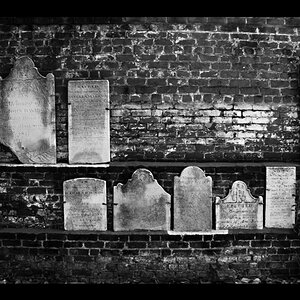
![[No title]](/data/xfmg/thumbnail/34/34144-52e7a5d3e3908ae808afeabfe86fffdc.jpg?1619736317)
![[No title]](/data/xfmg/thumbnail/34/34142-948c6bafdf60862125009004d5a06e46.jpg?1619736315)
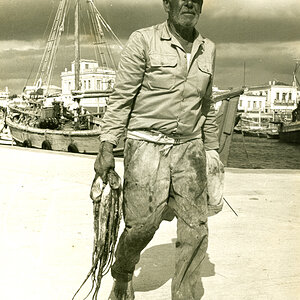
![[No title]](/data/xfmg/thumbnail/39/39440-bc17565eb7adee7f9859c53933e8543c.jpg?1619739033)
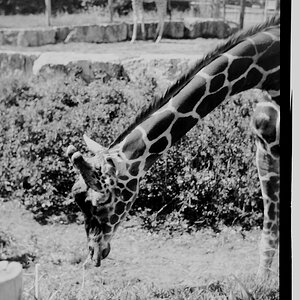
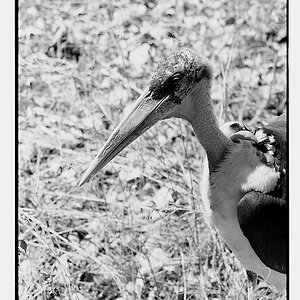
![[No title]](/data/xfmg/thumbnail/42/42021-ffc326f5dc5b4c65ce53935e6e9e4338.jpg?1619739980)
![[No title]](/data/xfmg/thumbnail/30/30885-2764c7a15a288ed06f3903d3a2756832.jpg?1619734497)
